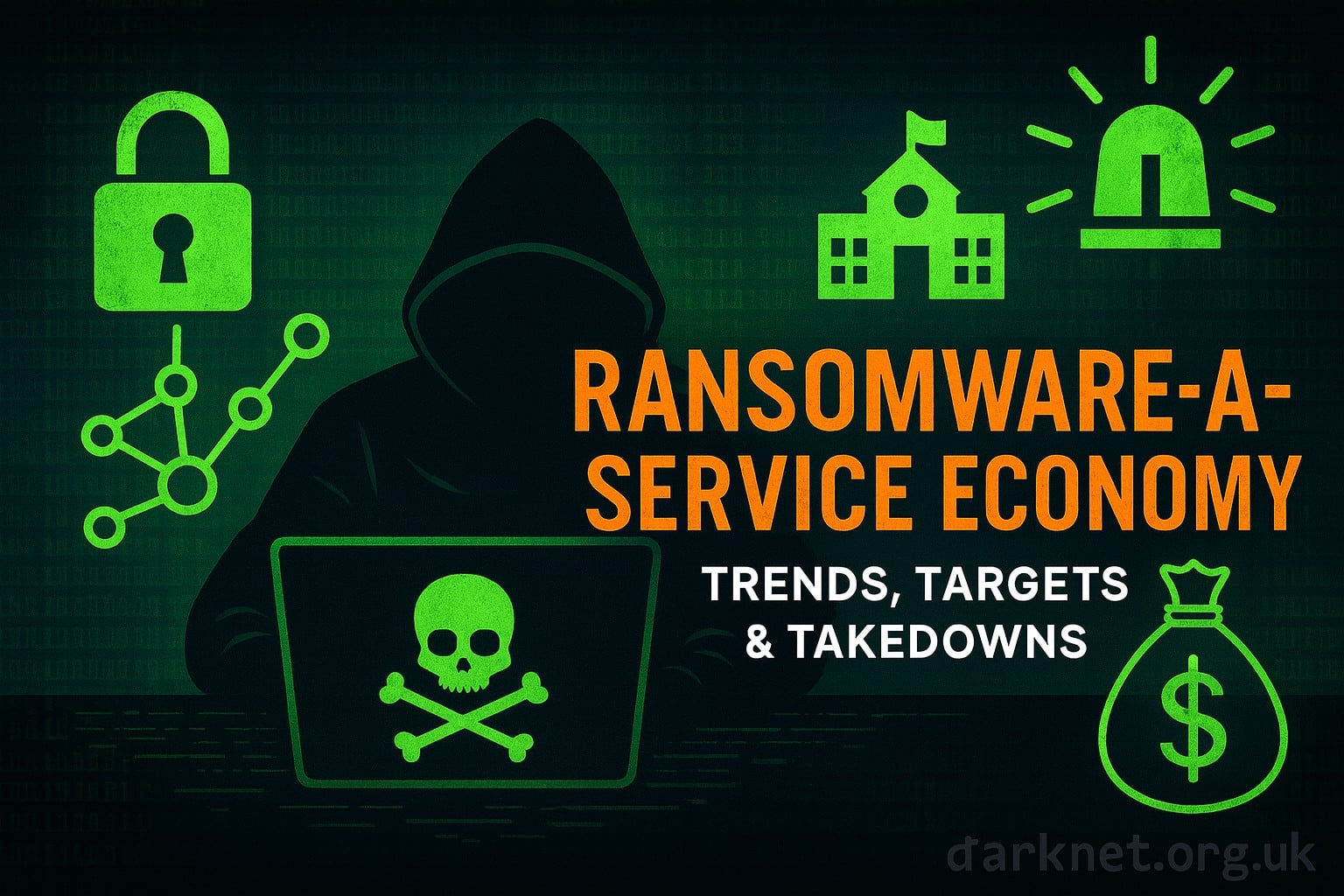Ransomware-as-a-Service Economy: Trends, Targets & Takedowns
The world of cybercrime has undergone a significant transformation in recent years. Ransomware, once a niche threat, has evolved into a full-fledged industry – the ransomware-as-a-service (RaaS) economy. This model has lowered the barrier to entry for would-be attackers, allowing practically anyone to launch a ransomware attack by partnering with RaaS operators.
The RaaS Model: A New Era of Cybercrime
Under the RaaS model, affiliates don't need advanced hacking skills. They can rent or subscribe to ransomware platforms and tools developed by professional cybercriminal teams. RaaS operators handle updates, payment portals (often located on the dark web), and sometimes even offer 24/7 technical support or negotiation services to their affiliates.
This professionalism means ransomware operations now resemble software startups – complete with dashboards, feature updates, and revenue-sharing agreements. Affiliates typically keep the majority of each ransom paid, while developers take a smaller percentage as their fee. This setup dramatically lowers the skill threshold for attacks, allowing established gangs to expand their reach without having to hack every target themselves.
Shifting Targets: From Big Game to Soft Targets
Early ransomware gangs often targeted huge payouts from large corporations or critical infrastructure, a practice known as "big game hunting." However, with law enforcement scrutiny rising, many affiliates have shifted toward softer targets like schools and SMBs with weaker defenses.
The education sector in particular has been hit hard – ransomware incidents against K-12 schools rose 393% between 2016 and 2022, with at least 85 separate attacks recorded from late 2022 to late 2024. The appeal is straightforward: outdated systems, limited cybersecurity budgets, and significant operational disruptions.
Ransomware Pricing: Demands Up, Payments Down
Ransom pricing strategies are shifting. On the one hand, demands have grown bolder: in 2024, the average ransom demanded from a lower-education institution was nearly $4 million, with 44% of attacks requesting more than $5 million.
On the other hand, more victims refuse to pay. Coveware’s Q4 2024 data shows only 25% of victims paid – an all-time low – and the median payment dropped to about $110,000. This squeeze forces affiliates to adapt: lowering demands for smaller targets, or doubling down on data theft and "double extortion."
Law Enforcement Pressure and RaaS Adaptation
International efforts in 2023–2024 scored high-profile wins. In October 2024, Operation Cronos targeted LockBit infrastructure across 12 nations, seizing servers, freezing 200 crypto wallets, and arresting four affiliates.
This followed the February 2023 FBI-led takedown of Hive ransomware, which prevented an estimated $130 million in ransom payments by quietly distributing decryption keys to victims. These actions disrupted major players like LockBit and ALPHV (BlackCat), contributing to a 35% drop in total ransomware revenue in 2024.
Case Studies: The Hidden Cost of Ransomware
Several schools have faced significant recovery costs after being targeted by ransomware. In late 2020, Baltimore County Public Schools and Buffalo Public Schools were targeted with ransom demands of $100,000–$300,000, which they refused.
Recovery and hardening costs topped $10 million for each district, and schools were closed for days, disrupting classes for over 100,000 students. Similarly, Morehead State University experienced a ransomware incident that compromised the personal data of approximately 20 individuals, resulting in over a month of system downtime.
The Future of RaaS: A Resilient Model
The ransomware-as-a-service economy operates like a global business, with developers, resellers, customer support, and constant adaptation. It has unleashed unprecedented attack volumes, impacting entities from multinational corporations to local schools.
Trends in 2024–2025 show declining payment rates, more decisive law enforcement action, and more cautious criminal behavior. Yet the model's resilience means it will continue evolving, perhaps toward higher volumes of lower-value attacks and more data-theft extortion.
In conclusion, the ransomware-as-a-service economy is a complex and evolving threat landscape. As law enforcement efforts adapt to this new reality, it is essential for organizations to prioritize cybersecurity awareness, implement robust security measures, and remain vigilant in the face of this ever-changing threat environment.
